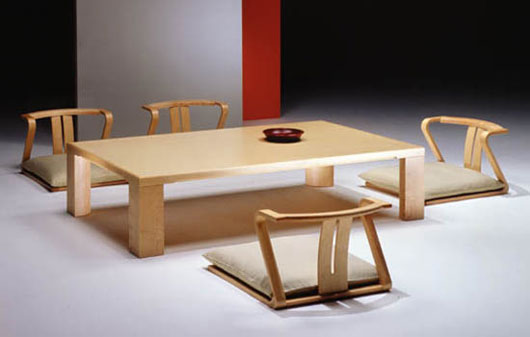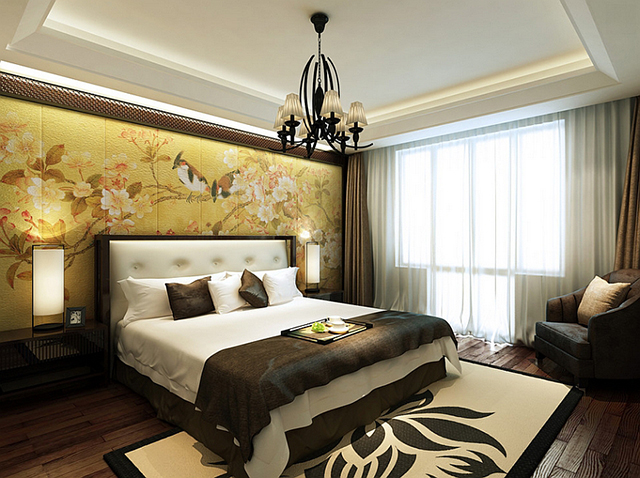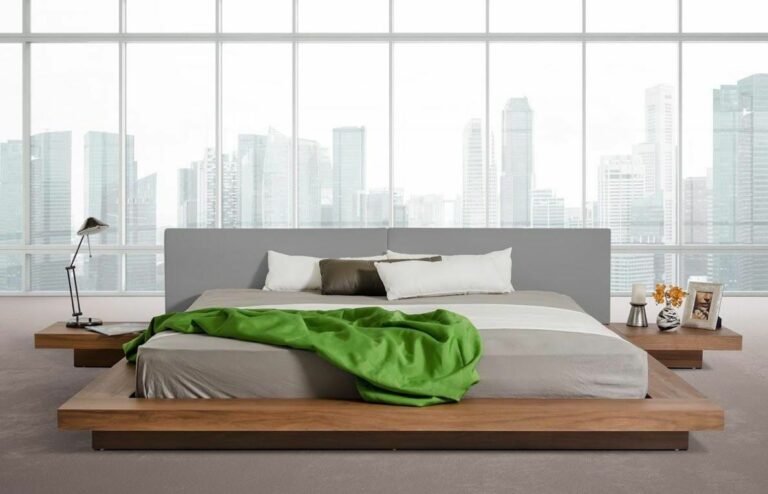The Principles Of Japanese Furniture Design
Japanese furniture design takes inspiration from both traditional and modern designs. It embraces nature but also incorporates new concepts such as minimalism to create unique items. You will always see this fusion in Japanese furniture.
There are a few principles that Japanese furniture is built on. Keep reading to explore these in detail.
1. Flexibility
Japanese culture is all about efficiently making use of resources. This is why you will always see this in their furniture designs as well. For example, many Japanese beds are futon beds that can be folded and stored away.
This allows people to make use of the space some other way during the day. You will notice that almost everything about a room and its furniture is reconfigurable in Japanese culture. This is how the layout is designed.
They even make use of shoji screens to divide rooms and then merge them back when need be. This efficient utilisation of space is one of the finest principles in Japanese furniture.
2. Simplicity
Simplicity is a value that is inherent in every Japanese individual. To them, the space of the room is just as essential as the design and the furniture. You will always see that their rooms have a minimal and simple appearance.
They decorate the rooms sparingly. Usually, you will see Japanese tables and a Japanese console table in almost all rooms, except the bedroom. This provides functionality and allows them to keep the space minimal.
The decoration will also be minimal, and they use elements such as natural lighting, colours, and minimal furniture to enhance the visuals of the room. You will notice the art of Zen reflected in their furniture and interior design principles.
3. Natural Colors
Japanese furniture makers always use natural colours for their furniture.
They use materials such as:
Bamboo
Rice straw
Wood
Paper
They don’t rely on paints or stains to colour the furniture as they want the natural element to shine. Even if artificial materials are used, they are still coloured with neutral tones to give them a natural look.
This is because Japanese people believe in uniting with nature and utilising their elements even in modern design. You will notice that even modern Japanese furniture incorporates nature in many ways.
This is why a Japanese style bed is always low and made of wood with a futon placed on top of it. You will not see an extremely bright colour in this furniture piece as they are all made of wood and not painted on to retain its natural texture.
4. Privacy
People in Japan value privacy above everything else. They also stress the importance of seclusion and solitude. This is why traditional Japanese furniture includes shoji screens that are made of paper.
These screens allow the natural light to pass through while also providing privacy to the user. So, people can partake in activities such as prayer, meditation, and other social gatherings.
Natural Materials
This is perhaps the best part of Japanese furniture design. The use of natural materials is seen in every piece of furniture that is made. For example, a Japanese floor bed will always be made of either wood or bamboo.
Apart from that, even activities such as eating dinner or lunch utilise natural elements. For example, Japanese table setting consists of a rice straw mat on which the Japanese tableware set pieces are placed.
This just goes to show that even small activities such as eating incorporate natural design elements to add to the experience of the individual.
Tatami
This is one of the most essential design elements in traditional Japanese culture that exists to date. Tatami is flooring that is made of rice straw mats. Before urbanisation took over, all Japanese floors were Tatami.
However, in modern culture, you will see that it still exists. People still have Tatami rooms in their houses or apartments. They can be used for multiple purposes. For example, a Japanese platform bed with a futon can be rolled out to make it a guest room.
Apart from that, other elements can be added to either make it a seating area or anything else whenever need be. This multi-functional aspect is what sets Japanese furniture and interior design apart from others.
Tokonoma
Tokonoma is another traditional Japanese design element. It is an alcove that was traditionally placed in tea ceremony rooms. However, modern Japanese design also utilises this traditional element.
This alcove is now placed in modern living rooms. It is the focal feature of the room and is usually accompanied by Japanese artwork. This can include anything from a painting to calligraphy to ikebana (flower arrangements).
Minimalism
The most important principle that every piece of furniture is built on. Minimalism is also the most essential design element in Japanese culture. The rooms don’t have many pieces of furniture. People usually sleep and eat on the floor as Tatami is used all over.
However, the modern interior and furniture also incorporate this element. This is why the furniture is neutral toned and incorporates nature as much as it can.
From Japanese beds to Japanese tableware sets everything is made keeping minimalism and nature in mind. It is a merging of two elements that only a few achieve successfully.
The flooring is always wooden, the screens are made of rice paper, and the interior is always decorated by giving preference to natural materials. This is the essence of Japanese design.
Final Words
Of course, there are many other principles in Japanese furniture design. However, these are the basic eight ones that everything else rests upon. You will find almost all these elements in every Japanese home, office, building, and everything else.
They embrace open spaces, nature, natural materials, and minimalism. This connection with nature is what makes their furniture designs unique and extremely durable.
You can also incorporate these principles and elements to make any room stand out. It will add depth to the room and make it look much more inviting than before.



